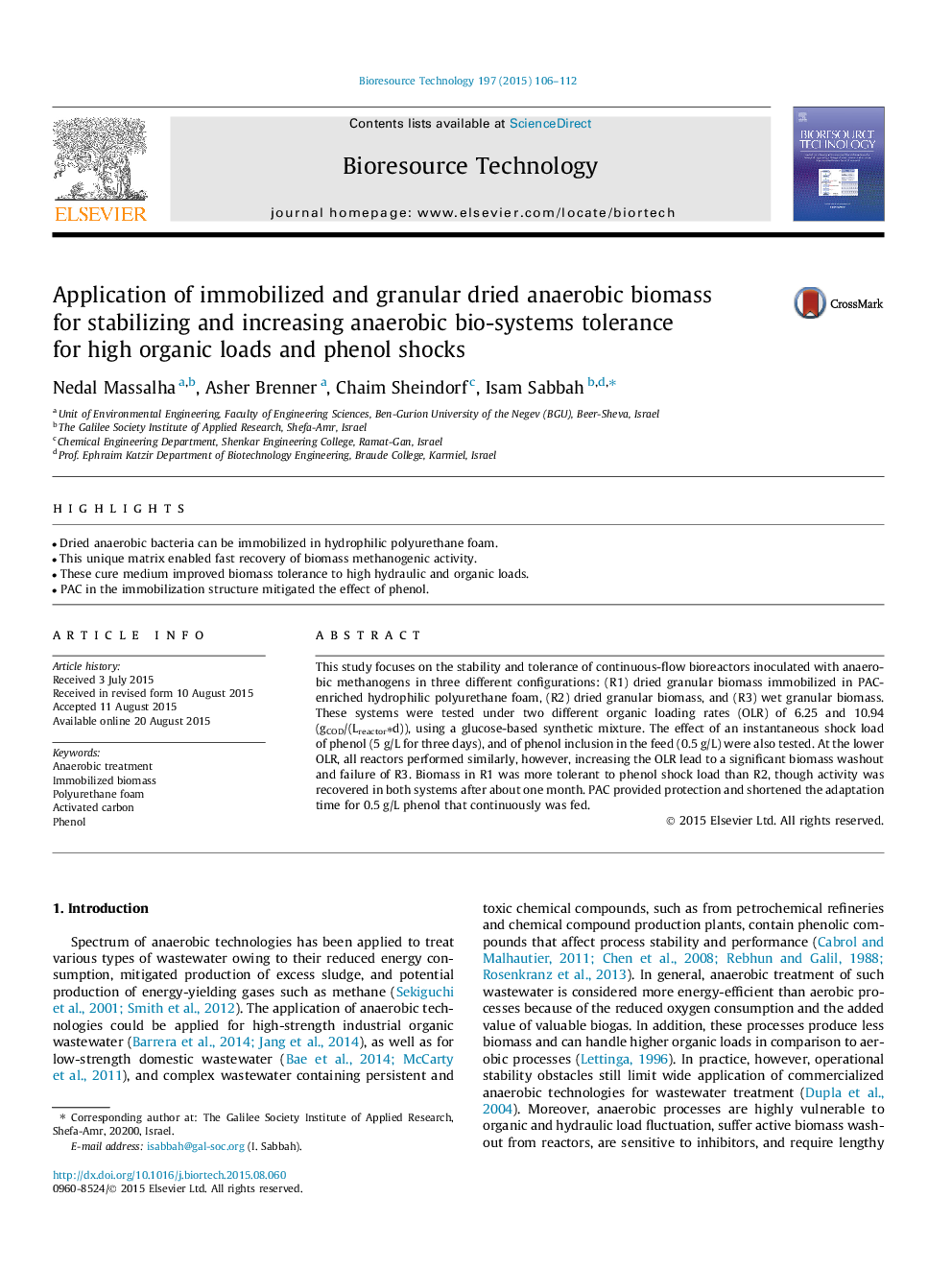| Article ID | Journal | Published Year | Pages | File Type |
|---|---|---|---|---|
| 7073225 | Bioresource Technology | 2015 | 7 Pages |
Abstract
This study focuses on the stability and tolerance of continuous-flow bioreactors inoculated with anaerobic methanogens in three different configurations: (R1) dried granular biomass immobilized in PAC-enriched hydrophilic polyurethane foam, (R2) dried granular biomass, and (R3) wet granular biomass. These systems were tested under two different organic loading rates (OLR) of 6.25 and 10.94 (gCOD/(Lreactorâd)), using a glucose-based synthetic mixture. The effect of an instantaneous shock load of phenol (5Â g/L for three days), and of phenol inclusion in the feed (0.5Â g/L) were also tested. At the lower OLR, all reactors performed similarly, however, increasing the OLR lead to a significant biomass washout and failure of R3. Biomass in R1 was more tolerant to phenol shock load than R2, though activity was recovered in both systems after about one month. PAC provided protection and shortened the adaptation time for 0.5Â g/L phenol that continuously was fed.
Related Topics
Physical Sciences and Engineering
Chemical Engineering
Process Chemistry and Technology
Authors
Nedal Massalha, Asher Brenner, Chaim Sheindorf, Isam Sabbah,
